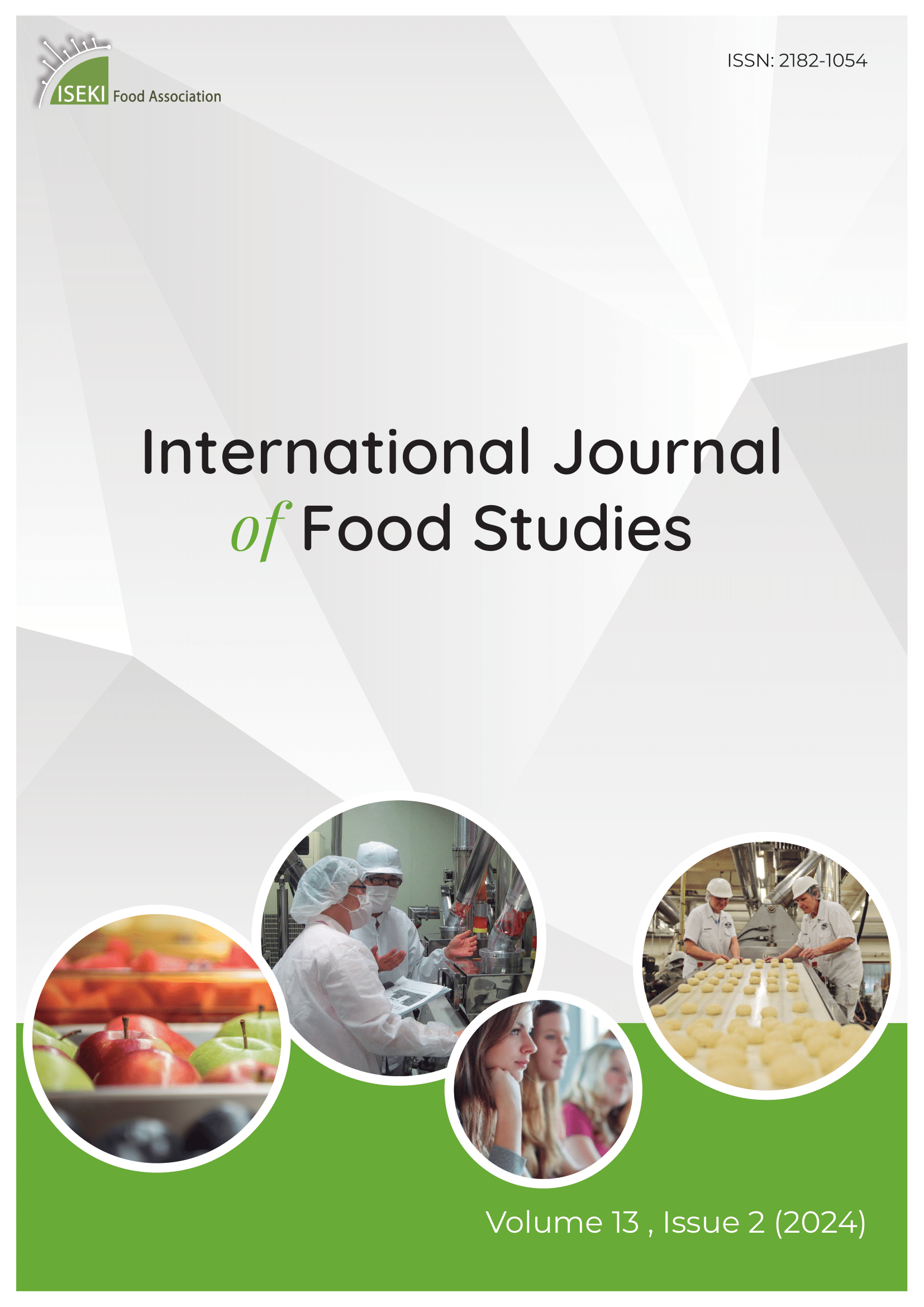
More articles from Volume 2, Issue 2, 2013
Profile of currently employed European Food Scientists and Technologists: Education, experience and skills
Effect of structural modifications on the drying kinetics of foods: changes in volume, surface area and product shape
Effect of drying techniques on the retention of antioxidant activities of Saskatoon berries
Physicochemical characterization of Gozitan Honey
Effects of modified atmosphere, associated with masterpack transport packaging, and refrigerated storage time on the quality characteristics of pork loin cuts
Use of response surface methodology to evaluate the reducing power in binary solutions of ascorbic acid with natural polyphenolic antioxidants
Abstract
Natural polyphenols, ferulic acid (FA) and hesperetin (Hp) were tested for their Fe3+-reducing power, using the TPTZ methodology, as a first step to rank them according to their antioxidant potential. Ranking also included quercetin (Qt), a very well-studied natural, polyphenolic antioxidant, and ascorbic acid (AA). All phenolics considered were also tested in binary mixtures with AA, to illustrate possible mixture effects. By employing a simple linear regression approach, combinations of AA / Qt and AA / Hp were shown to result in antagonistic effects, whereas in mixtures of AA / FA, synergism was observed. To thoroughly investigate the role of the relative concentrations of the antioxidants, a 3×3 factorial design was implemented. This approach enabled the recording of the response (reducing power) upon simultaneous variation of concentrations of both antioxidants in the mixtures, and revealed only antagonism for every combination tested. It is proposed that in similar investigations factorial designs need to be implemented for reliable prediction of the antioxidant response(s) within appropriate limits. This is particularly crucial for antioxidants that are destined to be added in food matrices, where maximal antioxidant protection is always sought.
Citation
Copyright

This work is licensed under a Creative Commons Attribution-NonCommercial-ShareAlike 4.0 International License.
Article metrics
The statements, opinions and data contained in the journal are solely those of the individual authors and contributors and not of the publisher and the editor(s). We stay neutral with regard to jurisdictional claims in published maps and institutional affiliations.






